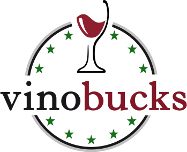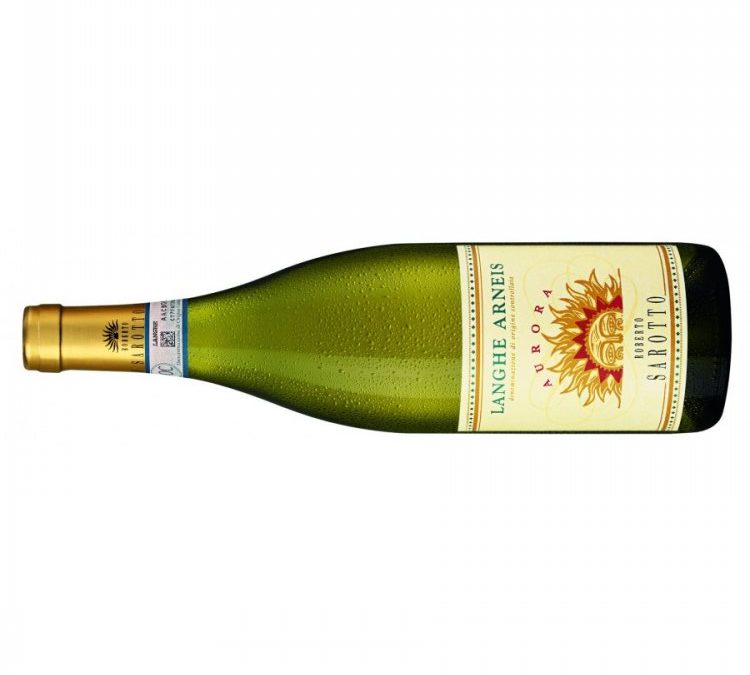Das Piemont in Italien! Wer möchte da nicht an die gute Kirsche in dem herrlichen Konfekt denken? Bevor nun alle „ich“ rufen: Lassen Sie uns gemeinsam an Alba und die herrlichen weissen Trüffel, einen wunderbaren Dolcetto d’Alba denken – und dann zur Sache kommen: zur Arneis, einer autochthonen weissen Rebsorte des Piemont. In den 1990er Jahren fast ausgestorben – wobei ich vermute, man hat versucht sie sterben zu lassen, lautet ihr Name im Piemonteser Dialekt doch „die kleine Schwierige“ -, erlebt Arneis seitdem eine Renaissance. Einen nicht unerheblichen Anteil an dieser Renaissance hat die Familie Sarotto, die seit 1870 für den Weinbau lebt. Und seit 1990 auch vom Weinbau, dem Jahr, in dem Roberto Sarotto seine Ausbildung als Önologe beendete und erfolgreich begann, die Weine der familieneigenen Güter selbst zu produzieren und zu vermarkten.
Mein grosses Problem beim Wein und dem Schreiben darüber ist, dass ich die grossen Burgunder und Bordeaux, noch nicht einmal alte Chateau d’Yquem, nicht bezahlen kann. Meine Arbeitgeber können das auch nicht – und meine zahllosen reichen Freunde wollen es nicht. Dass aus diesem Problem nicht Gejammere auf erhöhtem Niveau, sondern sogar Glück erwachsen kann, verdanke ich Menschen wie Roberto Sarotto: auch er lässt mich, als reicher Mann, die weisse Trüffel nicht wie Kartoffeln essen, aber immerhin seine sehr bezahlbaren Weine kosten. Dolcetto, Barbera, Freisa und Moscato, Chardonnay, Brachetto und dann, mit beeindruckenden Aromen von Mandel, grünem Apfel, Birne und Melone, Arneis. Grundsätzlich seit dem 15. Jahrhundert als Renesium oder Ornesio bekannt, hatte ich dergleichen bis dahin weder gehört noch getrunken. Was aber bei gerade einmal 55 Hektar Rebfläche auch kein Wunder ist… Inzwischen reden wir von über 600 Hektar Rebfläche – und die Sarottos verkaufen ihren Arneis sogar.
Bin ich in Italien, dann meistens zur Erholung, seltener aus beruflichem Grunde. Das gute an meinem Beruf jedoch ist, dass so oder so eine typische Woche Montagmittag mit drei Falschen Weisswein bei einem Essen zu zweit beginnt. Der Wein kann einer der grösseren Spumante sein, ein leichter Lugana – oder eben der Arneis. Und zur italienischen Küche, die, anders als die französische, nicht für’s Feuilleton kocht, passt „die kleine Schwierige“ perfekt. Frische Sardinen, direkt vom Kutter in die Pfanne, Meeresfrüchte – und natürlich Pasta, solange sie nicht zu pikant zubreitet wird. Unvergesslich – wohlgemerkt: zum Arneis – Animelle (Kalbsbries) mit Kartoffelpüree und Alba-Trüffel: die Spannung, die von dem anfänglich nicht zu übergehenden Kontrast erzeugt wird, löst sich rasch in vollkommener Harmonie auf. Die fest-zarte Konsistenz des Kalbsbries, seine luftigen Röstaromen, die leichte Süsse, ergeben mit der frischen weissen Frucht, den Blüten und den zarten Mandeln (leichte Bitternote) am Gaumen ein harmonisches Geschmackserlebnis. Und was nun wie Frevel klingt, sollten Sie auch einmal probieren: Coniglio, Kaninchen, dass mit mehr als einer Hand Kräutern in Arneis gegart wird.
Drei bis vier Monate Stahltank, völliger Verzicht auf Holz, 3-5 g Restzucker, 5 g Säure pro Liter, machen Arneis einem Sauvignon Blanc nicht unähnlich. Im direkten Vergleich ist Arneis aber viel subtiler, weniger statisch und unglaublich lebendig. Und für gewöhnlich schwieriger zu bekommen… Mit Recht zählt das Piemont zu den besten Weinbaugebieten der Welt, liegt allerdings selbst in Italien auf den hinteren Plätzen, was den Ertrag betrifft. Und das darf uns alle beruhigen: es werden im Piemont nämlich fast ausschliesslich Qualitätsweine gekeltert. Unser Wein der Woche, der Sarotto Arneis 2017, ist zwar nur einer davon, dafür aber ein herausragender.
https://vinobucks.de/shop/de/weissweine/italien/sarotto-arneis-2017-roberto-sarotto.html
Piedmont in Italy!
Alba, white truffles, Dolcetto d’Alba! Who wouldn’t want to think of the good cherry in the delicious confectionery? Before everyone calls out „Me“: Let us think together of Alba and the wonderful white truffles, a wonderful Dolcetto d’Alba – and then come to the point: Arneis, an autochthonous white grape variety of Piedmont. Almost extinct in the 1990s – although I suspect she was tried to die, since her name in Piedmontese dialect is „the little difficult one“ – Arneis has been experiencing a renaissance ever since. The Sarotto family, who have lived for viticulture since 1870, played a not inconsiderable part in this renaissance. And since 1990 also from viticulture, the year in which Roberto Sarotto finished his education as an oenologist and successfully began to produce and market the wines of the family estates himself.
My big problem with wine and writing about it is that I cannot pay for the great Burgundians and Bordeaux, not even the old Chateau d’Yquem. My employers can’t either – and my countless rich friends don’t want me to. I owe it to people like Roberto Sarotto that this problem does not lead to whining at an elevated level, but even happiness: as a rich man, he also lets me not eat white truffles like potatoes, but at least taste his very affordable wines. Dolcetto, Barbera, Freisa and Moscato, Chardonnay, Brachetto and then, with impressive aromas of almond, green apple, pear and melon, arneis. Basically known as Renesium or Ornesio since the 15th century, I had never heard or drank anything like that before. But with only 55 hectares of vineyards this is no wonder… We are now talking about over 600 hectares of vineyards – and the Sarottos even sell their Arneis.
If I am in Italy, then mostly for recreation, less often for professional reasons. The good thing about my job, however, is that one way or another a typical week starts Monday noon with three fake white wines at a meal for two. The wine can be one of the bigger sparkling wines, a light Lugana – or the Arneis. And to Italian cuisine, which, unlike French cuisine, does not cook for the arts pages, „the little difficult one“ fits perfectly. Fresh sardines, directly from the cutter into the pan, seafood – and of course pasta, as long as it is not too spicy. Unforgettable – note: to the Arneis – Animelle (sweetbread) with mashed potatoes and Alba truffle: the tension created by the initially unavoidable contrast quickly dissolves in perfect harmony. The firm and delicate consistency of the sweetbread, its airy roasted aromas, the light sweetness, the fresh white fruit, the flowers and the delicate almonds (light bitter note) on the palate make for a harmonious taste experience. And what now sounds like sacrilege, you should also try: Coniglio, rabbit, cooked with more than one hand of herbs in arneis.
Three to four months steel tank, complete renunciation of wood, 3-5 g residual sugar, 5 g acidity per litre, do not make Arneis unähnlich a Sauvignon Blanc. In direct comparison, however, Arneis is much more subtle, less static and incredibly lively. And usually harder to get… Piedmont is rightly one of the best wine-growing regions in the world, but even in Italy it is at the bottom in terms of yield. And that can reassure us all: in Piedmont, quality wines are produced almost exclusively. Our wine of the week, Sarotto Arneis 2017, is only one of them, but an outstanding one.
https://vinobucks.de/shop/en/weissweine/italien/sarotto-arneis-2017-roberto-sarotto.html

